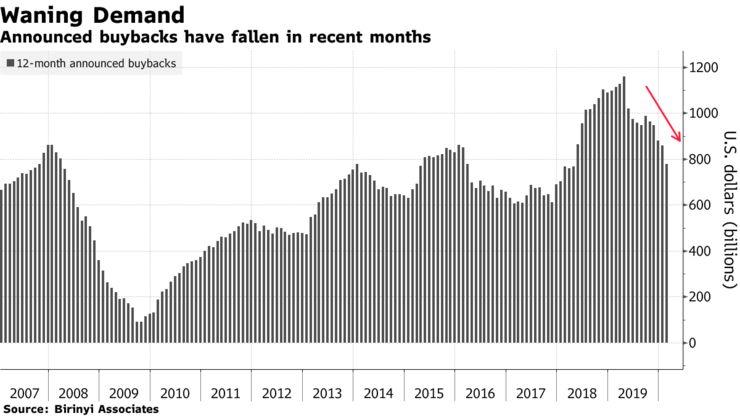In the course of my day, I run across a number of facts, charts and business situations that tend to confirm or disconfirm my basic view of the economy and markets. I believe there is a good chance that we are in the early stages of a phase transition (click here to learn about phase transitions) from robust financial markets to the sort of non-price credit rationing we call a financial crisis. I am going to post them as I see them during the day so that you see what I see, along with my analytical pieces that sum them up. Here is the first one.

US tax law makes it more efficient to deliver value to shareholders as capital gains than as dividends. Political and economic uncertainty has discouraged capital spending. Historically low interest rates have made it cheap for companies to borrow. All three have supported the rising tide of stock buybacks that has systematically reduced the number of outstanding shares and pushed stock prices higher. But stock buybacks are fading.
With a few notable exceptions, the bulk of stock buybacks have been debt-financed. Half of the value of outstanding corporate bonds carry the lowest investment grade rating, much of it issued by energy producers that are being hit hard by collapsing oil prices. When the bond market seizes up and banks back away from leveraged loans, as is beginning top happen happen, buybacks will slow to a trickle. It is of critical importance today to discriminate between companies that are buying back stock out of their free cash flow and those that are doing it with borrowed money.
JR



